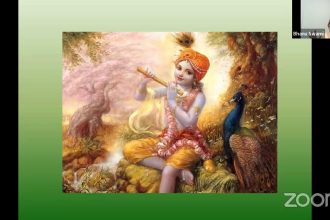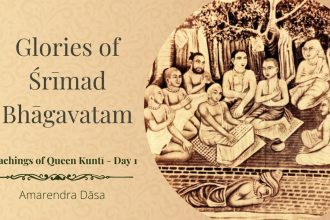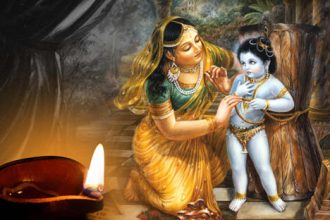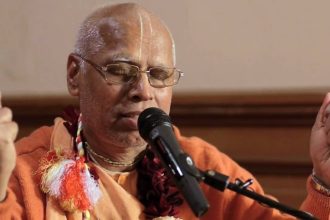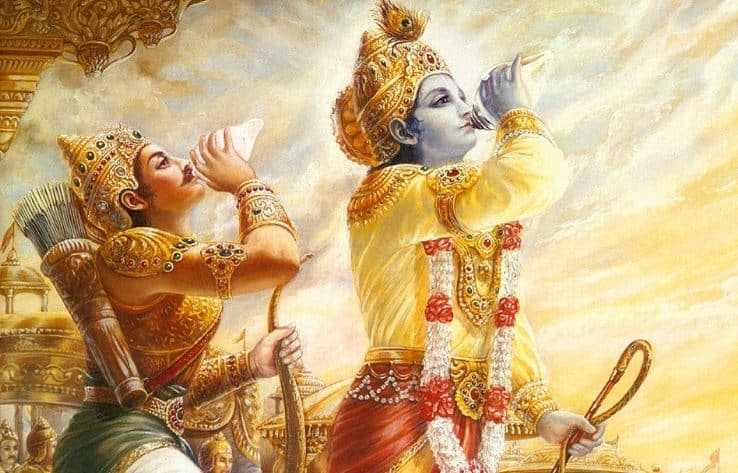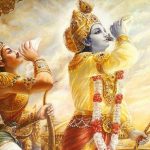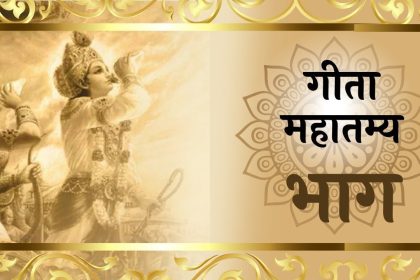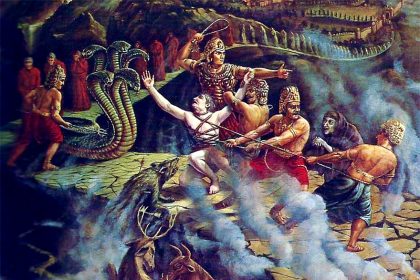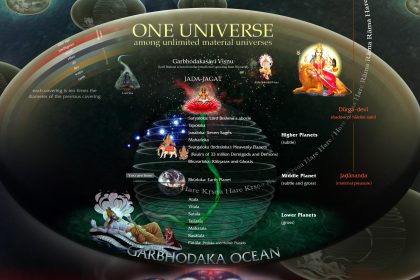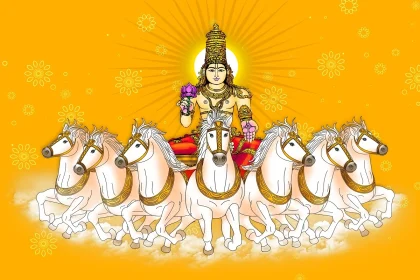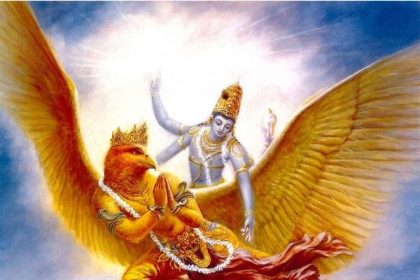TEXT 17
tad-buddhayas tad-ātmānas
tan-niṣṭhās tat-parāyaṇāḥ
gacchanty apunar-āvṛttiṁ
jñāna-nirdhūta-kalmaṣāḥ
SYNONYMS
tat-buddhayaḥ—those whose intelligence is always in the Supreme; tat-ātmānaḥ—those whose minds are always in the Supreme; tat-niṣṭhāḥ—those whose faith is only meant for the Supreme; tat-parāyaṇāḥ—who have completely taken shelter of Him; gacchanti—go; apunaḥ—āvṛttim—to liberation; jñāna—by knowledge; nirdhūta—cleansed; kalmaṣāḥ—misgivings.
TRANSLATION
When one’s intelligence, mind, faith and refuge are all fixed in the Supreme, then one becomes fully cleansed of misgivings through complete knowledge and thus proceeds straight on the path of liberation.
PURPORT
The Supreme Transcendental Truth is Lord Kṛṣṇa. The whole Bhagavad-gītā centers around the declaration that Kṛṣṇa is the Supreme Personality of Godhead. That is the version of all Vedic literature. Para-tattva means the Supreme Reality, who is understood by the knowers of the Supreme as Brahman, Paramātmā and Bhagavān. Bhagavān, or the Supreme Personality of Godhead, is the last word in the Absolute. There is nothing more than that. The Lord says, mattaḥ parataraṁ nānyat kiñcid asti dhanañjaya. Impersonal Brahman is also supported by Kṛṣṇa: brahmaṇo hi pratiṣṭhāham. Therefore in all ways Kṛṣṇa is the Supreme Reality. One whose mind, intelligence, faith and refuge are always in Kṛṣṇa, or, in other words, one who is fully in Kṛṣṇa consciousness, is undoubtedly washed clean of all misgivings and is in perfect knowledge in everything concerning transcendence. A Kṛṣṇa conscious person can thoroughly understand that there is duality (simultaneous identity and individuality) in Kṛṣṇa, and, equipped with such transcendental knowledge, one can make steady progress on the path of liberation.
TEXT 18
vidyā-vinaya-sampanne
brāhmaṇe gavi hastini
śuni caiva śva-pāke ca
paṇḍitāḥ sama-darśinaḥ
SYNONYMS
vidyā—with education; vinaya—and gentleness; sampanne—fully equipped; brāhmaṇe—in the brāhmaṇa; gavi—in the cow; hastini—in the elephant; śuni—in the dog; ca—and; eva—certainly; śva—pāke—in the dog—eater (the outcaste); ca—respectively; paṇḍitāḥ—those who are wise; sama-darśinaḥ—who see with equal vision.
TRANSLATION
The humble sages, by virtue of true knowledge, see with equal vision a learned and gentle brāhmaṇa, a cow, an elephant, a dog and a dog-eater [outcaste].
PURPORT
A Kṛṣṇa conscious person does not make any distinction between species or castes. The brāhmaṇa and the outcaste may be different from the social point of view, or a dog, a cow, and an elephant may be different from the point of view of species, but these differences of body are meaningless from the viewpoint of a learned transcendentalist. This is due to their relationship to the Supreme, for the Supreme Lord, by His plenary portion as Paramātmā, is present in everyone’s heart. Such an understanding of the Supreme is real knowledge. As far as the bodies are concerned in different castes or different species of life, the Lord is equally kind to everyone because He treats every living being as a friend yet maintains Himself as Paramātmā regardless of the circumstances of the living entities. The Lord as Paramātmā is present both in the outcaste and in the brāhmaṇa, although the body of a brāhmaṇa and that of an outcaste are not the same. The bodies are material productions of different modes of material nature, but the soul and the Supersoul within the body are of the same spiritual quality. The similarity in the quality of the soul and the Supersoul, however, does not make them equal in quantity, for the individual soul is present only in that particular body whereas the Paramātmā is present in each and every body. A Kṛṣṇa conscious person has full knowledge of this, and therefore he is truly learned and has equal vision. The similar characteristics of the soul and Supersoul are that they are both conscious, eternal and blissful. But the difference is that the individual soul is conscious within the limited jurisdiction of the body whereas the Supersoul is conscious of all bodies. The Supersoul is present in all bodies without distinction.


